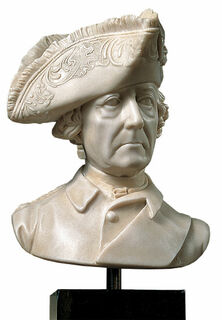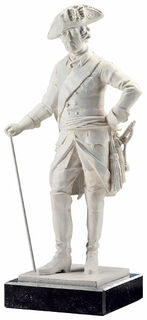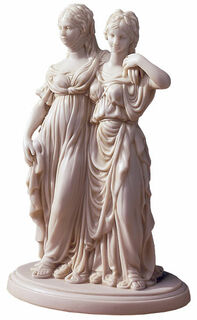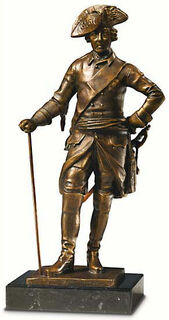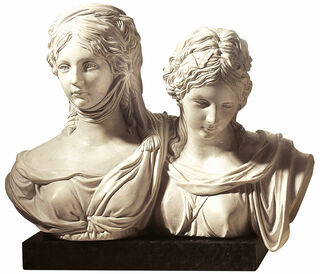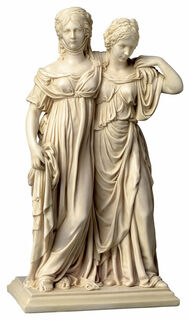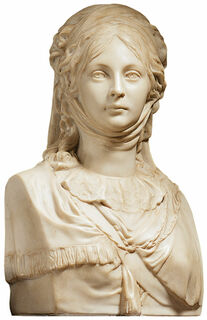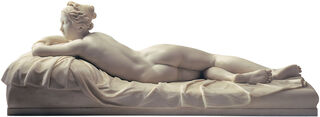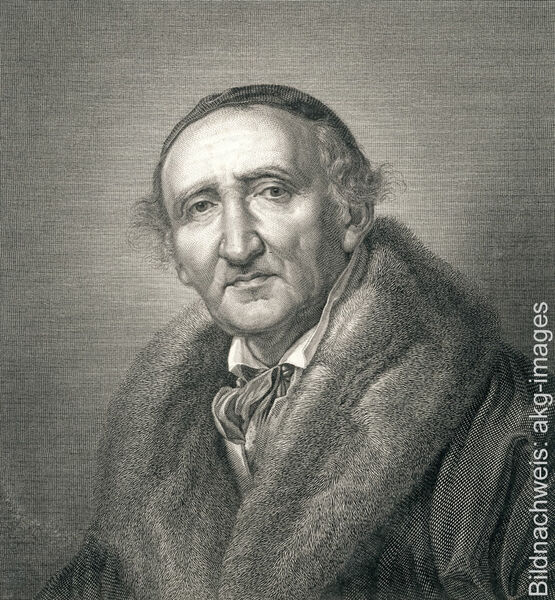
Johann Gottfried Schadow
1764-1850
Johann Gottfried Schadow was the most important German sculptor of the Napoleonic era. He trained at the royal school of sculpture and later became head of the court sculpture workshop and "director of all sculptures" in 1788. Schadow's classical ideal was increasingly joined by realistic, national and individual features. His classically ideal and realistic style set the trend for the 19th century.
His art combines a natural sensuality and grace leading out of the Rococo with great realism. His double statue of the crown princesses Luise and Friederike of Prussia in marble is the first life-size double statue of classicism and set standards for 19th-century monument sculpture. He created the famous quadriga on the Brandenburg Gate in copper rubbing, as the bronze casting technique could not yet be used for such large objects. During the Restoration period, Schadow's realistic classicism found fewer patrons and was supplanted around 1820 by the official and emphatically representative art of his pupil Caspar Daniel Rauch.
Until his death, Schadow was director of the Berlin Academy and exerted great influence, also through his writings.

